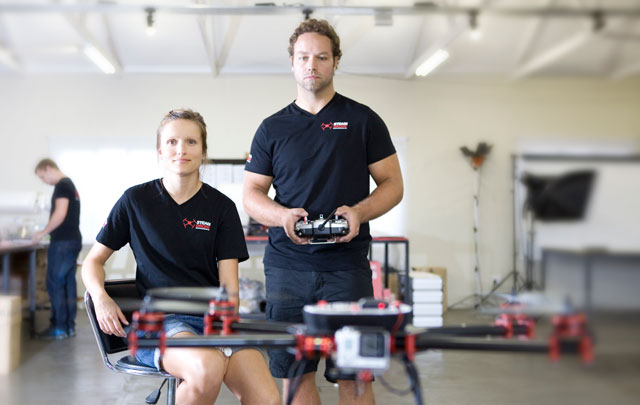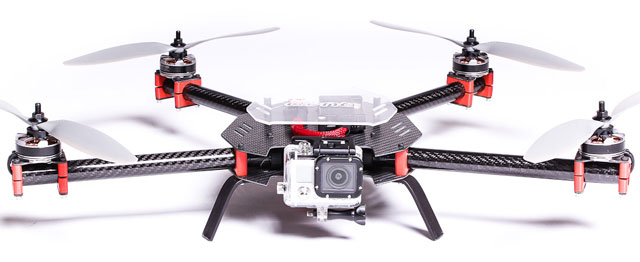
In 2012, Motion Pixel, a small media production company based in the picturesque coastal town of Knysna, wanted to offer its clients footage unattainable only from fancy camera rigs and remote control helicopters.
Owner Duran de Villiers, 29, discovered the technology he was after was not readily available. So, the technology enthusiast started toying with the idea of creating his own drone capable of lifting a camera so he could begin shooting events hosted in Knysna and the surrounding areas.
Fast-forward two years, and SteadiDrone, the company that emerged from this idea, is rapidly becoming one of South Africa’s most exciting technological exports. The company, self-funded by De Villiers and his wife Alexa, raked in R14m in turnover in its first financial year in 2013. With still zero investment from outside investors, De Villiers says SteadiDrone in 2014 will “double and maybe triple” its sales over last year.
“I started to design and develop our first drone, which I conceptualised and built myself,” he tells TechCentral. “I immediately fell in love with the technology and it kind of just snowballed from there.”
Within three months, SteadiDrone had its first unit available for sale and within a year De Villiers transformed his media production company into a drone manufacturer. SteadiDrone now has dealerships in South America, North America, Canada, the UK, most of Europe, the United Arab Emirates and Australia.
“I taught myself everything I needed to know about the technology,” he says. “Back then, the technology was still very new and very experimental. It was a learning curve, but I’ve had a knack for electronics from a young age so it came naturally.”
De Villiers downloaded a trial version of AutoCAD, the computer-aided design software, and started “messing around” with product design.
Watch SteadiDrone’s QU4D in action (via YouTube):
Putting together his first drone required him to solder the printed circuit board, code the program to operate the drone, and tweak the firmware it uses. SteadiDrone now has a team of 11 people.
The company specialises in kits that users assemble and fly.
Watch video footage taken using the QU4D and a GoPro HD3 (via YouTube):
The drones were originally targeted at aerial video and photography but buyers have found other uses for them. They’ve been used in a number of television and movie productions, including ones made by the BBC. Even the US Air Force uses the drones to chase birds from runways. And the World Bank uses them to map land in 3D by attaching special hardware to the drones where most users place the camera.
SteadiDrone has three models, ranging from US$500 to $15 000. The main differences between the models are the flight time and the payload that the drones are able to carry.
International interest
De Villiers has had interest from international companies wanting to invest in SteadiDrone, even some which have wanted to buy the business, but he says he knows its potential and is reluctant to do a deal too soon. “We are looking at investments with an open mind.”
About nine in 10 drones sold are to international customers, with 60% coming from the US. Howevr, sales in South Africa have picked up this year, De Villiers says.

The biggest challenge was building a product that works and getting it through various stages of research and development. Today, he says, his bigger challenge is marketing.
SteadiDrone sources most of its raw materials from overseas, but these are cut and assembled in Knysna.
“SteadiDrone has some exciting stuff in the pipeline,” says De Villiers. “We are working with industry partners and our goal is to be one of the key civilian drone manufacturers in the world.”
The company expects to launch a new mid-sized drone in the next few weeks that is designed to carry a wider range of cameras and will appeal to a much broader audience, he says. — © 2014 NewsCentral Media

